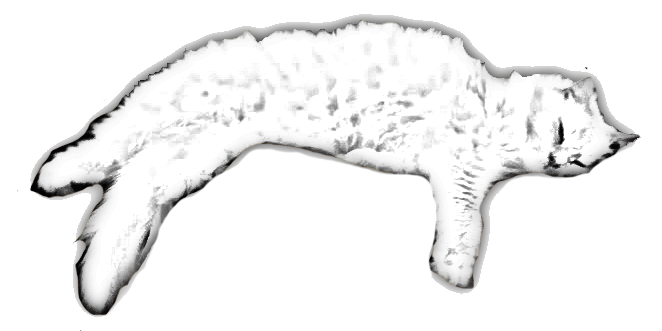We've all seen those adorable long-haired indoor cat breeds, their majestic fur flowing like a regal cape. But behind that beauty lies a nightmare of untamed chaos. Grooming becomes a daunting challenge, health issues lurk, and shedding seems never-ending.
Taming the tangles and coping with allergies can feel like an uphill battle. In this article, we delve into the world of long-haired indoor cat breeds, exploring the struggles and providing valuable tips for managing this wild ride.
The Challenges of Grooming Long-Haired Indoor Cat Breeds
Grooming long-haired indoor cat breeds presents us with numerous challenges. These majestic felines possess beautiful, flowing coats that require regular maintenance to keep them healthy and mat-free. To tackle this task effectively, understanding proper grooming techniques is essential.
Firstly, brushing is key in preventing matting. By using a high-quality brush, we can gently remove loose hair, preventing it from tangling and forming mats. It's crucial to brush in the direction of hair growth, paying close attention to areas prone to matting, such as the belly and tail.
Additionally, regular bathing is crucial to keep their coat clean and free of dirt and oils. However, it's important to use cat-specific shampoos and to rinse thoroughly to avoid skin irritation.
With patience and the right tools, grooming long-haired indoor cat breeds can be a rewarding experience for both owner and feline companion.
Health Issues Associated With Long-Haired Indoor Cat Breeds
Despite our best efforts, long-haired indoor cat breeds can still experience health issues due to their unique coat characteristics and living environment.
One of the common misconceptions about long-haired cats is that they're less prone to allergies compared to their short-haired counterparts. However, the reality is that their dense fur can trap allergens such as dust mites and pollen, leading to respiratory problems and skin irritations.
Another health issue faced by long-haired indoor cats is matting, which occurs when their fur becomes tangled and knotted. This can be painful and uncomfortable for the cat, and if left untreated, can even lead to skin infections.
To prevent these health issues, regular grooming is essential. Recommended grooming tools for long-haired indoor cats include a slicker brush, a wide-toothed comb, and grooming shears. These tools help to remove loose hair, prevent matting, and maintain a healthy coat for these beautiful feline companions.
Managing Shedding: Tips for Long-Haired Indoor Cat Breeds
To minimize the amount of fur that ends up on our furniture and clothing, regular brushing and the use of shedding tools are essential for managing the shedding of long-haired indoor cat breeds.
Reducing shedding in these cats can be a daunting task, but with the right techniques and strategies, it can be effectively managed.
Long-haired cats require more frequent brushing compared to their short-haired counterparts. This helps to remove loose hair and prevent it from matting and forming clumps.
Additionally, using shedding tools such as grooming gloves or deshedding brushes can help to remove excess fur and reduce shedding.
It's important to be gentle and patient while brushing, especially in areas where matting is more likely to occur, such as behind the ears and under the armpits.
Taming the Tangles: Long-Haired Indoor Cat Breed Care
We must be vigilant in our care for long-haired indoor cat breeds to prevent and manage tangles.
Regular brushing is the key to preventing matting in these cats. Long-haired breeds, such as Persian or Maine Coon, have dense coats that are prone to tangles and knots. By brushing their fur on a daily basis, we can remove loose hair and prevent it from tangling and matting.
It's important to use a brush or comb specifically designed for long-haired cats to effectively remove tangles without causing discomfort. Additionally, exploring different grooming styles can help in managing tangles. Some owners may choose to keep their long-haired cats in a shorter, more manageable cut, while others may opt for a more elaborate grooming style.
Ultimately, it's important to find a grooming routine that suits both the cat's needs and the owner's preferences.
Finding Relief: Coping With Allergies to Long-Haired Indoor Cat Breeds
Our search for relief from allergies to long-haired indoor cat breeds led us to explore various strategies and treatments.
Allergy medication is one option that many people turn to when dealing with cat allergies. Over-the-counter antihistamines, such as cetirizine or loratadine, can help alleviate symptoms like sneezing, itching, and congestion. Prescription medications like corticosteroids or leukotriene modifiers may be recommended for more severe allergies. However, it's important to consult with a healthcare professional before starting any medication.
Another approach to consider is adopting a hypoallergenic cat breed. While no cat breed is completely hypoallergenic, certain breeds, such as the Siberian or the Balinese, are known to produce fewer allergenic proteins in their saliva or dander.
Regular grooming and cleaning can also help reduce allergens in the environment.
Conclusion
In conclusion, managing the grooming and health needs of long-haired indoor cat breeds can be a challenging task. However, it's important to note that these breeds also come with their own unique charm and beauty.
Did you know that the average long-haired cat can shed up to four times more hair than short-haired cats? This statistic highlights the importance of regular grooming and shedding management for owners of these beautiful feline companions.




0 Comments